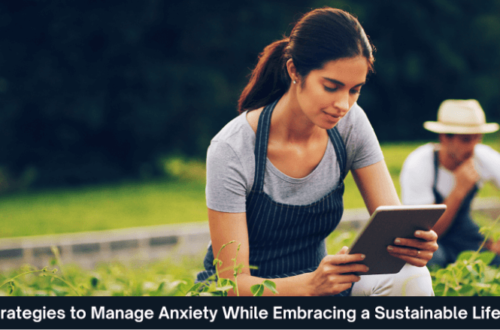Living sustainably isn’t just a buzzword—it’s a way to make a tangible difference for our planet while improving your own life. Inspired by the Appalachian Mountain Club’s (AMC) practical approach to eco-conscious living, this article dives into 10 actionable tips to help you reduce your environmental footprint. Whether you’re new to green living or looking to deepen your commitment, these strategies blend simplicity, impact, and a touch of personal connection to make sustainability feel approachable and rewarding. Let’s explore how small changes can lead to big results, all while keeping things light, relatable, and real.
Why Go Green? The Case for Sustainable Living
Sustainability is about making choices that preserve our planet for future generations. It’s not about perfection but progress—small, intentional steps that collectively reduce greenhouse gas emissions, waste, and resource depletion. According to the AMC, individual actions, when multiplied across millions of households, can have a massive impact on combating climate change. My own journey started with a reusable water bottle, a simple swap that saved me money and cut down on plastic waste. It felt like a small win, but those wins add up.
Tip 1: Ditch Single-Use Plastics
Single-use plastics are a major environmental culprit, with 335 million metric tons produced annually, half destined for landfills or oceans. Swapping disposable items for reusables—like water bottles, coffee mugs, or canvas bags—reduces waste and saves money over time. I remember the first time I brought my own mug to a coffee shop; the barista’s smile and a discount made it feel like a mini victory.
Best Reusable Products to Start With
- Stainless Steel Water Bottle: Durable, keeps drinks cold or hot, and saves ~1,500 plastic bottles yearly.
- Beeswax Wraps: A sustainable alternative to plastic wrap for food storage.
- Canvas Tote Bags: Perfect for grocery shopping, reducing plastic bag use.
Tip 2: Master the Art of Recycling and Upcycling
Recycling is great, but upcycling—repurposing items creatively—takes it to the next level. AMC suggests turning old containers into planters or organizers. I once turned a cracked teapot into a quirky succulent planter, giving it new life instead of tossing it. Check your local recycling guidelines to ensure you’re sorting correctly, and explore upcycling ideas for household items.
Where to Find Upcycling Inspiration
Pinterest and local thrift stores are goldmines for creative ideas. Websites like Upcycle That offer tutorials for transforming everyday items into something useful and beautiful.
Tip 3: Reduce Food Waste Through Planning and Composting
Food waste is a massive issue, with 30–40% of the U.S. food supply ending up in landfills, producing methane as it decomposes. Meal planning and composting can drastically cut waste. I started composting vegetable scraps in a backyard bin, and it’s now a nutrient-rich boost for my garden. If you don’t have space, look for community composting programs in your area.
Composting Made Simple
- Backyard Bin: Affordable and easy to set up for food scraps and yard waste.
- Countertop Composters: Ideal for apartments, like the Lomi composter.
- Drop-Off Sites: Many cities offer food scrap collection—check EPA’s composting guide.
Tip 4: Rethink Your Diet for the Planet
Switching to a plant-based or low-meat diet can cut your carbon footprint by up to 73%. Livestock farming produces significant greenhouse gases, so even one meatless day a week helps. I tried “Meatless Mondays” and discovered how delicious (and cheap!) lentil soups and veggie stir-fries can be. Shopping at local farmers’ markets also supports sustainable agriculture and reduces transport emissions.
Pros and Cons of a Plant-Based Diet
| Pros | Cons |
|---|---|
| Lower carbon footprint | May require learning new recipes |
| Health benefits (more fiber, nutrients) | Initial cost for pantry staples |
| Supports local farmers | Social settings may limit options |
Tip 5: Conserve Energy at Home
Household energy use accounts for over 20% of U.S. emissions. Simple changes like switching to LED bulbs, unplugging electronics, or doing a DIY energy audit can lower your bill and emissions. I once forgot to unplug my charger for a week—my energy monitor showed it sipping power the whole time. Small habits, like turning off lights when leaving a room, add up fast.
Best Tools for Energy Savings
- Smart Power Strips: Automatically cut power to idle devices.
- Programmable Thermostats: Optimize heating and cooling schedules.
- LED Bulbs: Use 75% less energy than incandescent bulbs.
Tip 6: Save Water, Save the Planet
Only 3% of Earth’s water is freshwater, and less than 1% is drinkable. Conserving water reduces the energy needed to treat and distribute it. I started timing my showers (aiming for 5 minutes) and using a watering can for my plants instead of a hose. These small tweaks lowered my water bill and felt surprisingly empowering.
Quick Water-Saving Hacks
- Turn off the tap while brushing teeth or washing dishes.
- Install low-flow showerheads to reduce water use by 50%.
- Collect rainwater for gardening with a simple barrel setup.
Tip 7: Travel Smarter, Not Harder
Transportation is a major emissions driver, but sustainable choices like carpooling or biking can make a difference. I started biking to nearby trails instead of driving, and it doubled as exercise and a mood boost. For longer trips, consider carbon offset programs or destinations closer to home to minimize your footprint.
Comparison: Driving vs. Biking vs. Public Transit
| Mode | Emissions (g CO2/km) | Cost | Health Benefits |
|---|---|---|---|
| Driving | 192 | High | Low |
| Biking | 0 | Low | High |
| Public Transit | 50–100 | Medium | Moderate |
Tip 8: Choose Eco-Friendly Cleaning Products
Many cleaning products contain chemicals harmful to aquatic ecosystems. Switching to plant-based or homemade cleaners is safer and often cheaper. I make my own all-purpose spray with vinegar, water, and lemon essential oil—it smells great and works like a charm. Look for brands like Seventh Generation or Mrs. Meyer’s for eco-friendly options.
Where to Buy Eco-Friendly Cleaners
- Local Co-ops: Often stock sustainable brands in bulk.
- Online Retailers: Grove Collaborative offers subscription-based green products.
- DIY Recipes: Check Good Housekeeping for natural cleaner recipes.
Tip 9: Practice Sustainable Outdoor Adventures
When exploring nature, follow Leave No Trace principles to minimize impact. I once found a plastic bottle on a trail and packed it out—it felt good to leave the place better than I found it. Use eco-friendly sunscreen and bug spray, and consider volunteering for trail cleanups to give back to the outdoors.
Best Tools for Sustainable Hiking
- Reusable Fuel Canisters: Refillable options for camping stoves.
- Biodegradable Soap: Dr. Bronner’s for washing dishes outdoors.
- iNaturalist App: Contribute to citizen science by documenting wildlife.
Tip 10: Support Environmental Causes
Your voice and wallet can drive change. Vote for candidates who prioritize the environment, support conservation organizations like the AMC, or volunteer locally. I joined a community cleanup last spring, and connecting with others who cared about the planet was incredibly motivating. Every small action counts.
How to Get Involved
- Donate: Support groups like The Nature Conservancy.
- Volunteer: Join local cleanups or trail maintenance with organizations like the AMC.
- Advocate: Write to elected officials about environmental policies.
People Also Ask (PAA)
What does it mean to live a sustainable lifestyle?
Living sustainably means making choices that reduce your environmental impact, like conserving resources, reducing waste, and supporting eco-friendly practices. It’s about balancing your needs with the planet’s health. Small steps, like using reusable bags, can make a big difference over time.
How can I start living more sustainably?
Start with one or two changes, like switching to reusable water bottles or eating less meat. Build habits gradually to avoid overwhelm. Resources like the AMC’s sustainability guides can provide inspiration and practical tips.
What are the benefits of going green?
Going green reduces your carbon footprint, saves money, and promotes health through better diet and lifestyle choices. It also sets a positive example for others. For example, composting not only cuts waste but enriches your garden soil.
Where can I find eco-friendly products?
Look for sustainable products at local co-ops, farmers’ markets, or online retailers like EarthHero. Certifications like Fair Trade or USDA Organic ensure eco-conscious production. DIY options, like homemade cleaners, are also budget-friendly.
FAQ Section
Q: How much can individual actions really impact climate change?
A: Individual actions, when multiplied across millions, have a significant effect. For example, if every U.S. household switched to LED bulbs, it could save billions of kilowatt-hours annually. Start small, and your efforts will inspire others.
Q: Are sustainable products more expensive?
A: Some eco-friendly products have higher upfront costs, but they save money long-term. A reusable water bottle, for instance, can save you $3,000 over years compared to buying plastic bottles. Look for secondhand or DIY options to keep costs low.
Q: What’s the easiest way to reduce my carbon footprint?
A: Cutting single-use plastics and eating less meat are two of the easiest, most impactful steps. They require minimal effort but significantly reduce waste and emissions. Try starting with one change and build from there.
Q: How do I find local recycling programs?
A: Check your city’s website or Earth911 for recycling guidelines and drop-off locations. Many stores also offer plastic bag recycling bins. Knowing your local rules ensures you’re recycling effectively.
Conclusion: Your Green Journey Starts Now
Adopting a sustainable lifestyle doesn’t mean overhauling your life overnight. It’s about making mindful choices—swapping a plastic bottle for a reusable one, composting scraps, or biking to the park. Each step, no matter how small, contributes to a healthier planet. My own shift to green living started with a single reusable tote, and now it’s a way of life that feels rewarding and doable. Use these 10 tips, inspired by the AMC, to start your journey today. What’s the first change you’ll make?





